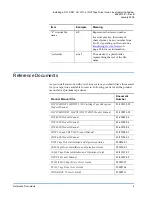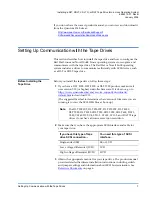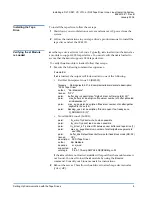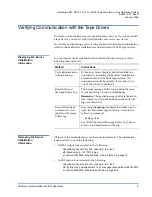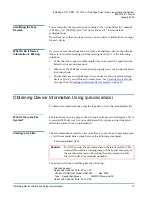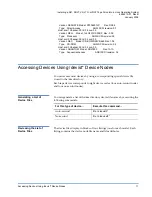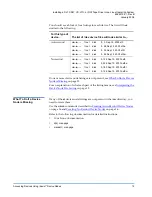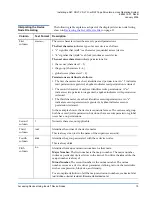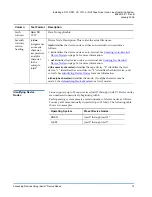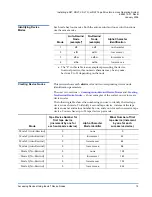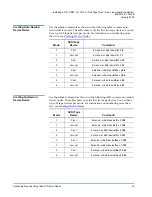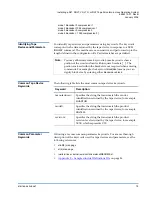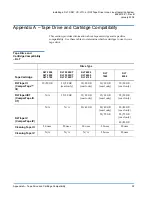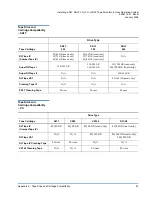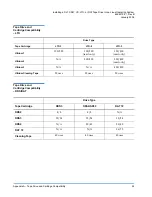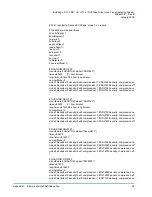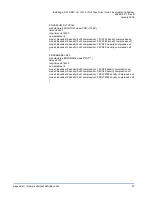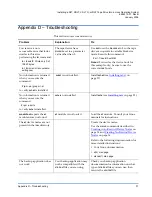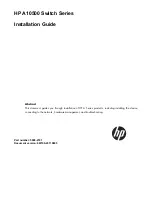
Installing a DLT, SDLT, VS, LTO, or DAT Tape Drive Into a Linux Operating System
6464215-01, Rev B
January 2006
mtx Tape Library Tool
20
All the matching initializations are collected in the order they are defined in
the
stinit.def
file. This means that you can define global parameters that apply
to all devices by placing them before all tape device definitions in
stinit.def.
For
an example, see
# Global Keywords and Values
in
Appendix C – Sample
stinit.def Definitions File
.
mtx Tape Library Tool
0
mtx
is a tape library media management tool. This section shows you how to
determine if
mtx
is installed and how to install it.
The use of
mtx
is beyond the scope of this document.
Verifying mtx is Installed
0
To verify
mtx
is installed, execute the following command:
# rpm -qa mtx
This command returns the name of the package followed by a version
number (for example, RHEL2.1 returns
mtx-1.2.13-1
).
If no information is returned, mtx is not installed on the system. To install
mtx, see
Installing mtx
.
Keyword
Description
block[size]=
value
The tape block size can be set to value bytes. Quantum
recommends using the default block[size] = 0,
signifying variable block mode.
comp[ression]=
value
Compression of the data by the drive is enabled if
value
does not equal zero.
Note that the tape driver cannot
enable compression for all drives that can compress
data. Some drives define compression using density
codes. Quantum does not use density codes and
requires compression to be enabled.
The compression default setting is determined by
stinit.def. If stinit.def is not found, compression defaults
to ON.
Note:
mtx rpm
is not included in the Red Hat Enterprise Linux 3.0. If you
are running RHEL 3.0, you will not be able to use the
mtx
module.

